Fluffy green Kurtin Astra Sound-level with an abundance of charming flower baskets are pleasing to the variety of shades from the beginning of summer and until the autumn, and the availability of landing and care allows you to grow a perennial almost on any types of soils, even stony.
Unpretentious and high decorative aster qualities made a plant with one of the most common colors used in landscape design. The long-term soil industry is indispensable when designing garden tracks, borders, alpine slides and flower beds.
Features of landing and care for Astro Sound-level in open soil - read in this selection of material.
Astra soil, description of the plant
Astra a long-term soil industry belongs to the genus Astra, aestrian family and has several adjacent names: Astra Alpine, Astra is false, Astra Korzhzhsky, Astra Ice, Chamomile Alpine.
- An herbal plant is widespread throughout Europe, in Russia, Asia, China, and even in North America. A fairly large distribution area is explained by the unpretentiousness and endurance of flower culture.
- The height of the height of the height of 7 to 35 cm varies from 7 to 35 cm, depending on the variety.
- Rhizome in the plant thickened, grows in a horizontal plane.
- Sweet stem is a reprehensive, slightly sown.
- Burnt and stem leaves of the plant are slightly different. So, the root leaves are with sweets, a shovel or egg-shaped form. Streamy leaves are becoming smaller than the top, they are fat, slightly pubescent, and they are also cherry below, and from above - seats.
- Externally, Astra Alpine soil reminds a miniature chamomile. Inflorescences are represented by single baskets (one on the stem), a diameter of about 5-6 cm. The color of flowers is different, depending on the variety: from purple and white to pink and blue shades with a round yellow core.
- Astra flowering period - long and continues from summer to the first half of autumn. Seeds are matured to autumn.
- Astra West belongs to soil perennial plants with high decorative qualities. Lush abundant flowering curtains look compact and gently on any flowerbed.
- In addition to the aesthetic component, the soil culture performs the functions of a plant that impede the growth of weeds and drying the soil.
- The frost-resistant and hardy perennial often remains the same green and voluminous even under the "hat" of snow.
Astra soil, varieties and varieties
The varieties of Alpine Asters are different with the color range, flowering timing and curtain sizes. Consider the most popular specimens of this species.
- Astra Soil Source "White Alps"
Astra white soil is distinguished by compact choppers green with delicate snow-white flowers.
- Astra Sound Resource Albus
The low densely frozen low grade, growing in a height of no more than 20 cm. White inflorescences, semi-world and simple, very similar to chamomile. Flowers in June-July. It looks spectacular in rockers and on the Alpine slides.
- Astra Sound Resource "Po Blue"
A variety with major inflorescences for this type, reaching in diameter up to 8 cm. Coloring of the inflorescences of a saturated blue shade, flowering for a long time. Kurtin grows volumetric and high enough (up to 40 cm).
- Astra Sound Power "Illyria"
Little winter-hardy grade with flowers of different shades.
- Astra Soil Alpine "Pink"
Ransetting variety, tie buds already in spring. Flowers with small pink inflorescences, a diameter of no more than 4 cm.
- Astra Soil Alpine "Blue"
A low-length perennial with large purple-blue flowers, a diameter of up to 6 cm. Extra long root leaves form a lush thick bushes of green color.
- Astra Sound Resource "Gloria"
Spectacular low-speed (no more than 30-35 cm) shrub with small (about 3 cm) blue flowers, abundantly covering curtains. Astra flowers in the first half of summer, but the bush itself remains decoratively attractive until the autumn itself. Unpretentious grade looks perfectly as a living border, in flower beds and rockers.
- Astra Sound Resource "Rosea"
A perennial grassy plant with beautiful pink inflorescences 4-6 cm in diameter and greenish yellow core. The lowered (15-20 cm) Kurtina quickly grows and needs a regular transplant. The bushes form neat green "balls", covered with bright purple flowers. Well looks in compositions with stones.
- Astra Soiliprovnaya "Goliath"
Semi-world floral outlets of a gentle purple shade, a diameter of about 6 cm. Flowering is a little long, about a month. Bushes of the sizogue shade, low and compact. Quickly grow up, mastering the "neighboring" territory.
- Astra Soil-level "Hepping End"
Rannunewood Astra with reprehensive strong stems and pink flowers. It blooms abundantly, from May to July. Kurtins are dense, compact, spherical shape. It looks good along the borders or garden tracks.
- Astra Sound Resource "Dunkla Shene"
The low-speed lush variety does not exceed 20-25 cm. Small (up to 3 cm) Inflorescences are painted in a thick purple color with a bright yellow center.
- Astra Sound Resource "Ruber"
Beautiful variety variety with raspberry flowers. The height of the plant is about 30 cm. Astra is suitable for single landings and group plantings (borders, flower).
- Astra Soil-level "Superbus"
Unpretentious grade with delicate, lilac-blue inflorescences and a compact green part. Makes a light shading.
- Astra Sound Resource "Dark Beauty", "Helen Beauty"
Low scenic curtains grow no higher than 15 cm, creating the effect of a bright vegetable carpet. The inflorescence of purple color, bloom in the second half of summer. Ideal for landing between stones.
A long-term mixture of the soil solid, combining mixed shades of semi-terry inflorescence, uses specially popular among the flower and dachnips.
You can buy an arrest in any flower shop. Combining the landing of several astra varieties with a different colors and flowering time, it is possible to achieve continuous flowering from early spring and to late autumn. In addition, you can add the landing of the Alpine Aster with other types of many years of culture: Italian, New Zealand, Belgian varieties.
Astra Soil, Face Planning
Perennial Astra is characterized as unpretentious herbal culture designed to land in an open ground.
However, the plant planted in the most favorable conditions will provide the highest possible and long-term flowering, and the bushes will get a beautiful bulk form.
Consider the key features of planting asters to open ground.
Astra soil, place for landing
- Perennial Alpine Astra prefers open solar sections. Good natural lighting favorably affects the soil bushes: they quickly grow up, become lush and provide abundant bloom over a long period. It is also allowed light, lace feud.
- Frequent drafts and gusty winds are not desirable for these colors, which should also be considered when selecting a place for planting Astra. For this, plots are ideal, with the leeward side of which, there is any structure, elevation or fence.
- Choosing a place to plant the soil astra, you should not stop on low, raw or often sleepers, since the roots of the perennial with excessive moisture begin to root and rotate.
- The best type of soil for planting Astra is the fertile loams, although on other soils the plant will also safely grow and develop.
- The best predecessors for Astra will be such floral plants like velvets and marigolds.
Astra soil, agricultural landing
- Before boarding the alpine soil astra, the area is drunk (at a depth of 30 cm), weeds are removed and, if necessary, fertilize. Organic and mineral fertilizers are suitable as fertilizer, better phosphorus-containing. It is enough to use, for example, 100 g of superphosphate for one astra bush.
- In addition to fertilizers, it is advisable to make a soil on the plot, adding about 200 g of lime or dolomite flour. Such a procedure is carried out no more than once every 5-6 years, in the fall or spring, which favorably affects the development of the root system of the low-spirited Alpine Astra.
- Given the surface running of the root system, the plant is planted in shallow pits with a lower drainage layer. As a drainage fits crushed stone or broken brick. The use of ordinary river sand is also allowed. Drainage contributes to the best suspiciousness of the bush and prevents the moisture in the soil.
- The depth of planting seedlings of Astra into open ground is carried out 2 cm lower than it was in the container.
- If there are several bushes of soil astra at once on the flowerbed, it is necessary to observe a certain interval between plants so that they do not shade each other and looked in a single live "border." This distance is usually 20-40 cm.
Astra Soil, Plant Care
Running in the horizontal plane, the kurtny asters form a bright and fluffy "carpet" that prevents the growth of weed herb and protecting the ground from drying out.
Astra grows in one place to 6-7 years, but the period of the most rapid development falls on the 3-4-year-old age of many years of culture. After that, the development of culture goes to a decline, bloom becomes not so abundant.
In order for the Alpine Astra annually demonstrate a magnificent and long-lasting blossom - it is important to comply with the elementary rules for the care of the perennial.
Astra Soil-level, watering and loosening
- Astra is considered a fairly moisture-loving plant that needs regular irrigation.
- It is especially important to provide a plant with a wet microclimate during its bootonization and active flowering.
- Alpine perennial negatively reacts both to dryness and on the mooring of the soil. The lack of moisture leads to the loss of decorative attractiveness and drying of the plant. The excess of moisture is fraught with the root system.
- Basic rules of irrigation: regular, uniform, abundant, using estimated water.
- Soil-level asters practically do not allow the development of weed grass, but in case of appearance, they need to be removed so that they do not take the nutrient elements from the soil and did not violate the decorative species of Kurtin.
- Periodically, the soil should be loosened around the Astra bushes, but it is necessary to do it carefully and not deeply, so as not to injure the surface roots of the plant.
- Several times for the entire vegetative season, the bushes of the soil astra are plunged (at a height of 5-6 cm), which contributes to the development and strengthening of the soil roots.
Astra Soil, feeding and fertilizer
- Astra favorably responds to additional nutritious feeding. It is especially important to fertilize the plant during its active growth and at the stage of tying the buds of many years of culture.
- The fertilizers use organic (humid, compost, coward) and mineral complexes (potassium and phosphorus-containing fertilizers). Fresh manure can not be used, it is necessary to wait for its full overlay.
Astra Soil-Plant, Fighting Diseases and Pest
- Astra soil production is characterized by increased resistance to a number of diseases and pests, but adverse conditions of cultivation may cause plant damage by some diseases.
- At the first signs of the disease, malicious dew or fuzariasis should be removed all the affected parts of the plant, and the entire bush is treated with any antifungal preparation. For these purposes, for example, burglar liquid or copper sulphate will suit.
- If the plant "is sick" with a torment of a torment, all the infected shoots not only to cut, but also burn so that the fungus could not spread the disputes and infect "neighboring" flowers.
- As a preventive measure that prevents infectiration of diseases is the spraying of the plant by fungicides of the systemic effect, for example, "topaz", "phytoosporin", "alirin". The processing of astra bushes is carried out twice, before flowering. To do this, a solution is prepared at the rate of 2 ml of a means of 10 liters of water.
- At the Kurtains Astra is possible the appearance of pest insects: caterpillars, a paw-tong, meadow cloud or slugs. To protect against parasites, it is possible to use both folk remedies (a solution of the economic soap and calcined soda, a solid of wood ash) and suitable insecticides ("carbofos", "phytodeterm"). Slugs have to be assembled manually.
Astra soil, trimming and preparation for winter
- On the eve of winter, Astra autumn soil industry needs to trim all shoots, to the level of the root cervix. You can also transfer this procedure for spring.
- Throughout the entire period of flowering, the blurred inflorescences should be removed, then bloom will last longer.
- The frost-resistant Astra does not need winter shelter. The exceptions are only young astes seedlings landed in the harsh northern regions. Then the cropped perennial mulk sawdust, sand or ordinary earth.
- In the spring, if the Astra bushes still retains a snowball, surplus snow removed to prevent unwanted stressing water.
Astra Soil, reproduction of the plant
Astra Soil-resistant heather has several breeding methods: seeds, cuttings, part of the bush.
Consider the features of all the methods of breeding alpine perennial.
Astra soil, reproduction seeds
- Seeds for sowing Astra must be fresh and high quality, only then the plant will provide a high level of germination. Seed material can be purchased in specialized garden stores or assemble independently. Collect seeds in autumn, after the end of flowering.
- The cultivation of the soil astrate of seeds does not always guarantee the preservation of varietal signs of a variety, which should be taken into account in the dilution of rare varieties of Astra. In addition, the seeds germinate not evenly, and if they are sinking them immediately on the flower, you have to transplant seedlings so as not to violate the decorative design of the flower beds.
- In a temperate warmth climate, the seeds of Astra are sown immediately into the open ground. Sowing exercise in the spring, in early April, after which the shuttless is covered with film. After a few weeks, when sprouts appear, the seedlings transplanted on the flowerbed. And by the end of the summer, the first flowers will appear on the young bushes of Astra, which is better to cut off (in order to strengthen the plant). A year later, the curtins will grow enough and delight with mass flowering.
- Possessing seeds under winter, in the fall. In the spring, sections appear, which are searched for a permanent place.
- In addition to seeding seeds in open ground, it is also possible to grow astra with a seaside method at home (acceptable for regions with a cold climate). At the same time, sowing time is shifted at the end of February - the beginning of March. Seeds are sown in boxes with light soil substrate and drainage holes. The depth of seed seedings is about 1-1.5 cm or they are simply scattered along the surface of the soil, truthing the layer of loose soil from above. Moisturize the soil from the spray gun, not allowing the formation of dry solid crust. Seed containers are placed in a light warm place. After the emergence of the first germs, the room temperature is reduced to 16-18 0With so that the sprouts are not pulled out and did not swell. In the phase of the appearance of 3-4 leaves, the seedlings of Astra dive. If the seeds were planted immediately into separate containers (cups), - the dive is not needed. With the onset of steadily warm weather, the seedlings are hardened and planted on the street.
Astra soil, reproduction with cuttings
- The hauling allows you to preserve all the parent signs of flower culture, however, not all cuttings will be able to root and develop further.
- For the preparation of cuttings, only healthy and strong instances of the soil industry are chosen. At the same time, the young tops of the shoots are cut taking into account so that on each stalk there is at least 3 sheets (approximately 6 cm).
- Cutting seals are treated with roots growth stimulant. Some gardeners are recommended for the development of roots to use succinic acid.
- Astra cuttings planted in a loose light soil made from a mixture of turf, peat and sand.
- Accelerate the rooting of cuttings helps the creation of an improvised greenhouse when the shoots are covered with film or cropped plastic bottles.
- Care for cuttings includes regular (but moderate) soil moisturizing and daily ventilation of "greenhouse".
- After 3-4 weeks, when the shoots are rooted, the shelter is cleaned.
- The rooted cuttings transplanted into the open ground at the end of the summer or at the beginning of autumn.
Astra Soil, reproduction of the division of the bush
- The easiest and most effective method of breeding the soil astra is considered to divide the bush on the part.
- This procedure, the plant transfers absolutely "painlessly", and can be divided from the beginning of summer to the autumn itself.
- For this, the bush is divided into parts so that the roots are rooted in each rosette, after which the decenes land on a new place.
During the transplant, weak and dried plants are removed. Rejuvenation and transplanting bush of the soil astra is recommended to be carried out every 3-4 years.
Astra Soil-level, application in landscape design
- Speected the soil industry as a solo unit plant in the composition with other blooming cultures and group landings, forming a bright flower carpet or a live curb.
- The flower is perfect for designing the edging of the garden tracks and at the foot of the Alpine slides. A diverse color gamma of many years of soil astra contributes to its wide demand among landscape designers.
- Considering that the aster of the heather is characterized by a prolonged period of flowering, culture is often planted as a background plant, for other colors, gradually replacing each other.
- Speeciously look at the background of a blue - purple low-axis Astra burgundy irises, a softener cypress and multicolor, enoter, dot dot, painted in a contrast, yellow color.
- The combination of bearded irises and soil assessing with a smooth transition of blue or lilac tones looks interesting.
- Astra Soil-resistant is perfectly combined with many colors: violets, asshole, dend, geranium, barberries, spirits, etc.
- Alpine Astra varieties planted on the shores of artificial ponds and reservoirs, grown as a balcony or pot plant.
Astra soil, therapeutic properties
- Astra Mountain soil, in addition to its decorative qualities, has also medicinal properties. The plant contains biologically active substances: kumarins, flavonoids, saponins.
- In folk medicine, flowering tops of perennials are used. For this, they specifically harvest the flowering period, after which they are dried in a dry dark place.
- Astra flowers are used in gastrointestinal disorders, in the treatment of tuberculosis and gold. Infusions of flowers help with pains in the joints, diseases of the tendon. Astra Soil-resistant Alpine has antipyretic, expectorant and anti-inflammatory effect.
- The juice of the medicinal plant is used as a row with skin diseases (dermatosis). The plant helps reduce itching, reduce inflammation.
- In any case, it is impossible to take a folk remedy without consulting with the attending physician.
Thus, unpretentious and, at the same time, the spectacular, Astra soil is beloved both by experienced landscape designers and ordinary flowers - lovers. Culture is easy to leave, does not require shelter for the winter, perfectly breeds and pleases the most warm season around the surrounding bright colors.

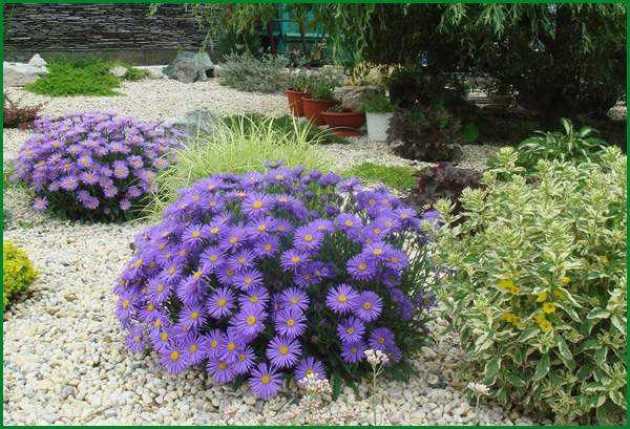
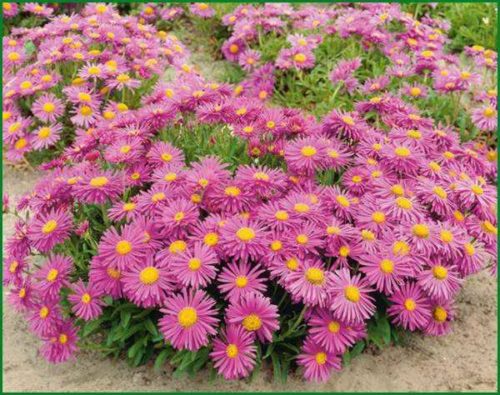
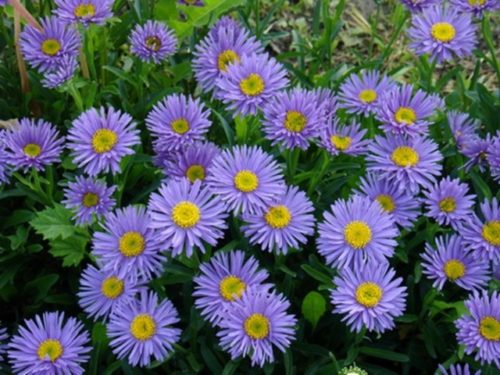
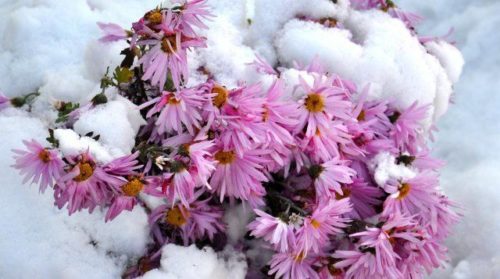
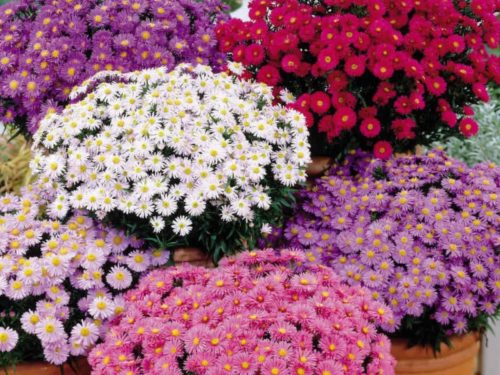
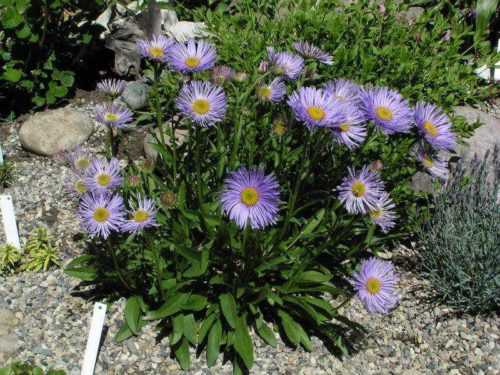


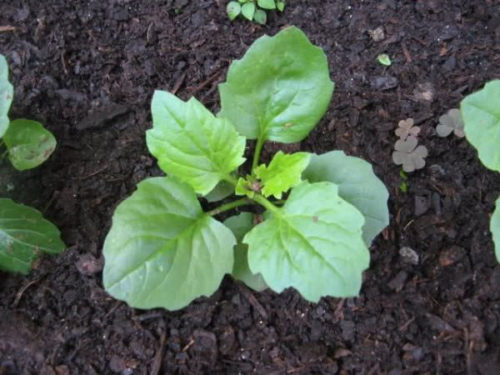
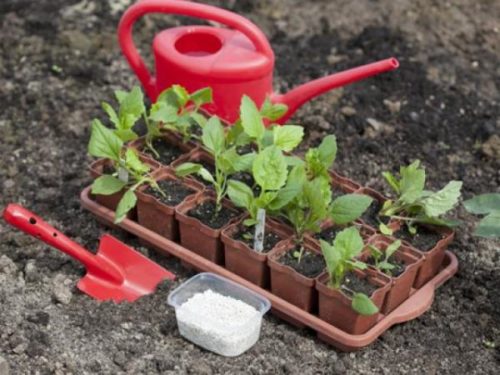
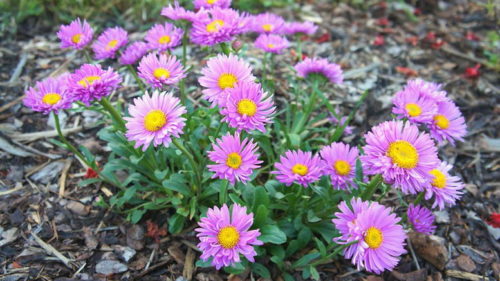
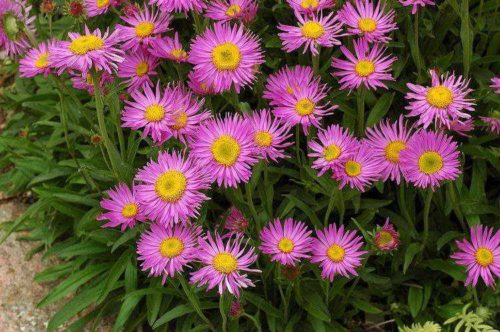
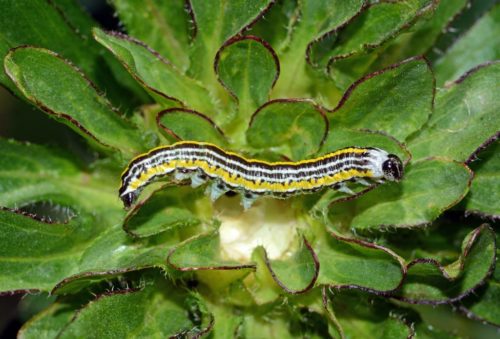
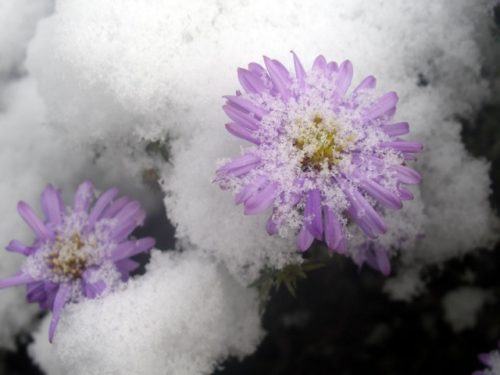
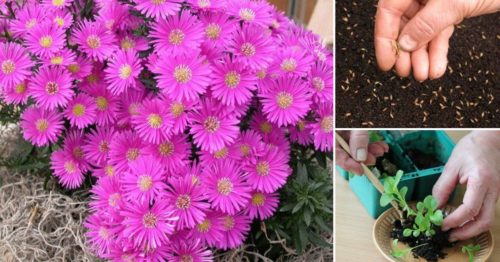
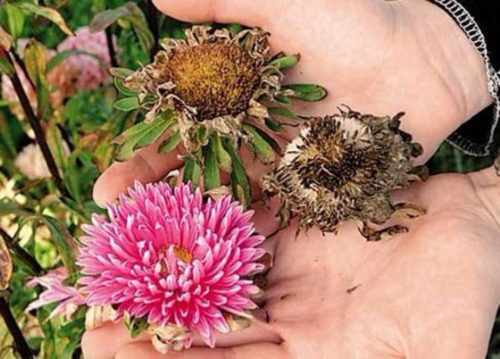
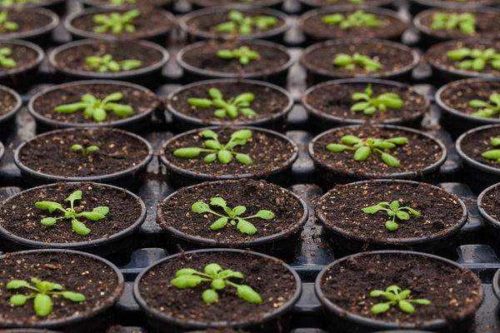
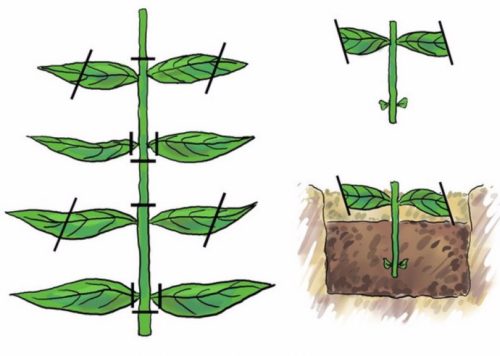
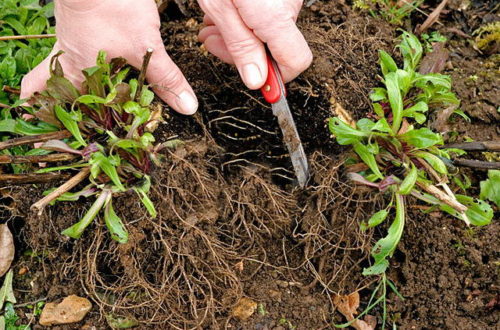
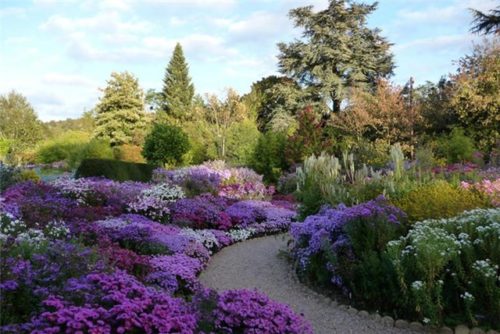
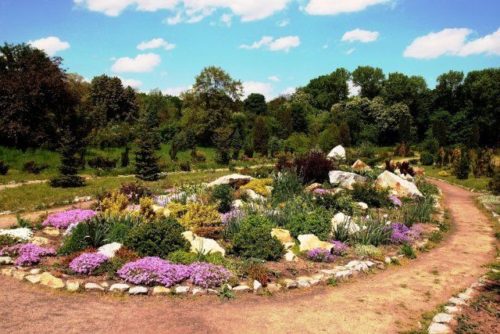

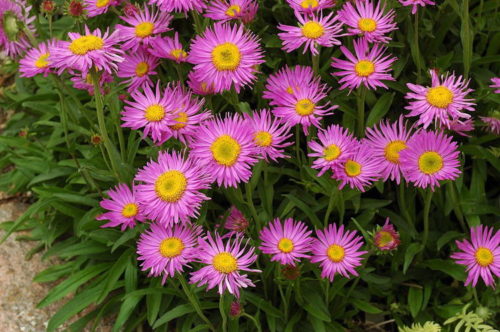
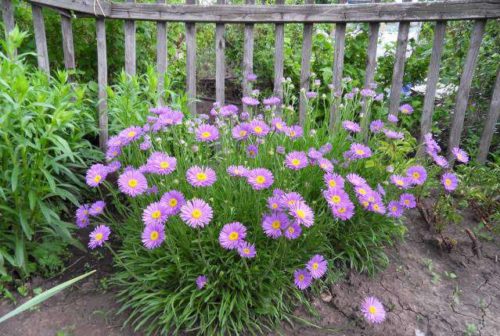
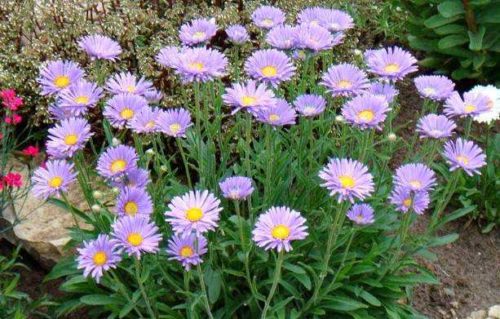
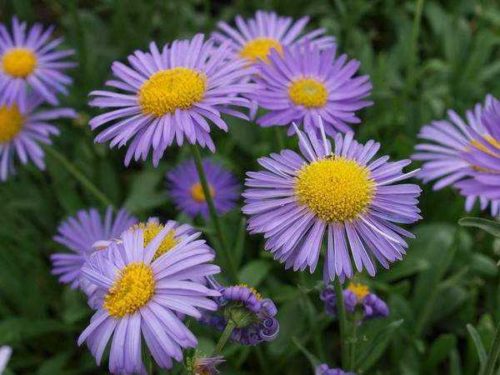

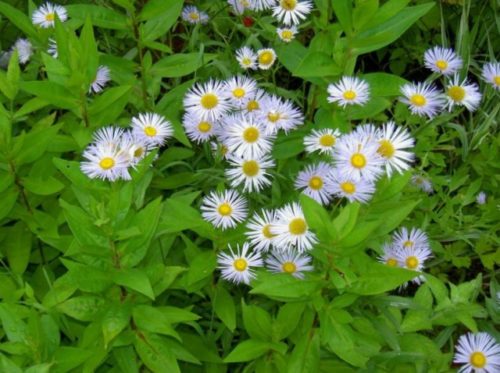
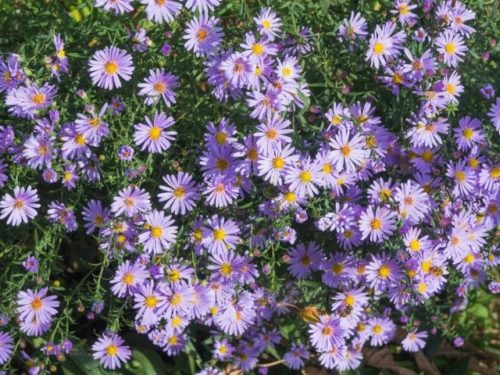
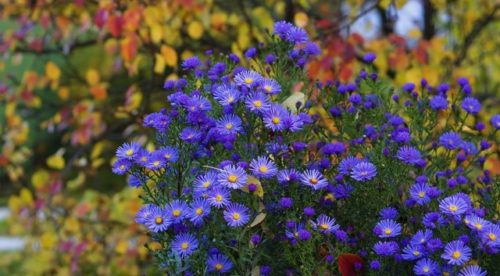
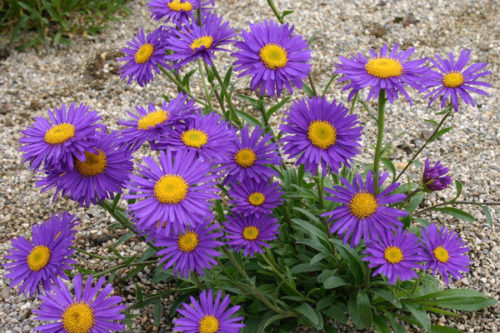












 Start a discussion ...
Start a discussion ...